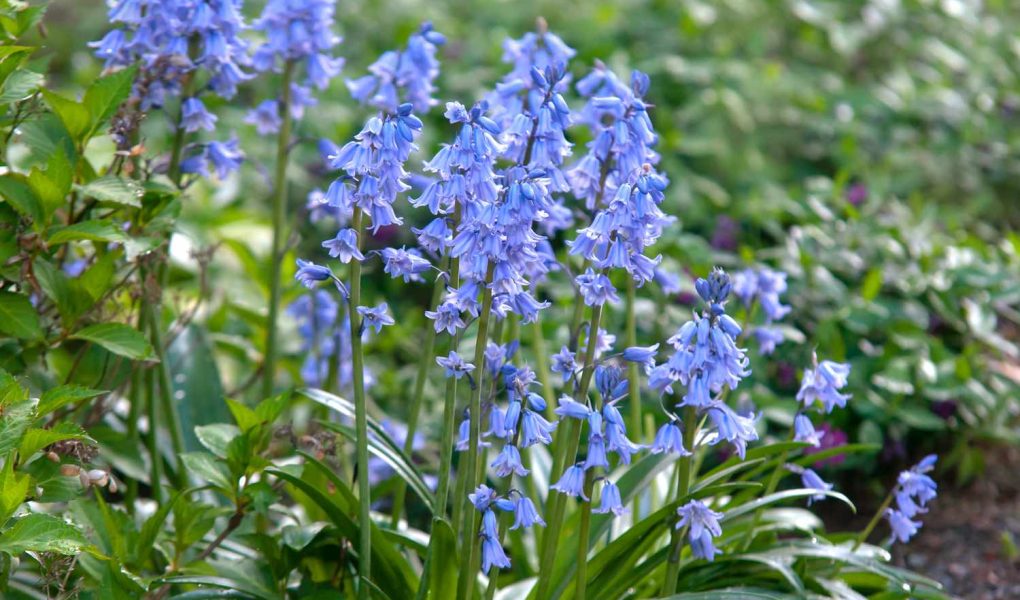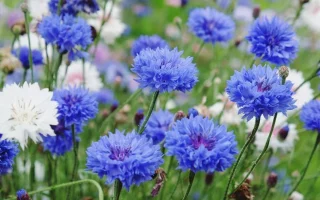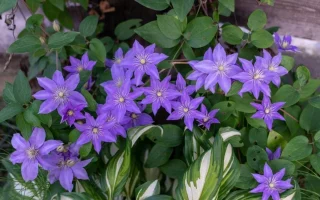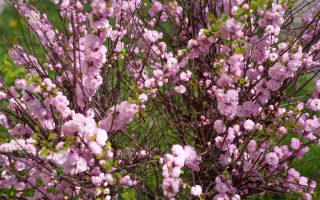lareddepathways.com – The Spanish Bluebell (Hyacinthoides hispanica) is a captivating perennial flower known for its stunning clusters of bell-shaped blooms that add a touch of elegance to any garden. With its striking blue, purple, or white flowers and long, slender green leaves, the Spanish Bluebell is a popular choice for gardeners looking to brighten their spring landscapes. Native to the Iberian Peninsula, this hardy and easy-to-grow flower thrives in a variety of garden settings, from flower beds to naturalized woodland areas.
Physical Characteristics of Spanish Bluebell
The Spanish Bluebell is a bulbous perennial that typically grows between 12 and 18 inches tall, depending on growing conditions. Its narrow, grass-like leaves emerge in early spring and provide a backdrop for the plant’s showy flowers, which appear in late spring to early summer. The flowers grow in dense, elongated clusters, creating a bell-shaped formation that hangs delicately from each stem.
The flowers of the Spanish Bluebell can be blue, purple, or even white, with the blue variety being the most common. The flowers have a distinct, sweet fragrance that further enhances their appeal. The plant’s leaves remain green throughout the growing season, providing a contrast to the vibrant blooms. Once the flowers fade, the plant goes dormant, and its foliage dies back by mid to late summer, making it an excellent companion plant for other summer-blooming species.
Growing Conditions and Care
Spanish Bluebells are relatively easy to grow and care for, making them an excellent choice for both beginner and experienced gardeners. They thrive in well-drained soil and prefer full sun to partial shade. While they are relatively adaptable, they perform best in soil that is moderately fertile and consistently moist, though they are tolerant of dry conditions once established.
These plants are hardy in USDA zones 4 to 9, making them suitable for a wide range of climates. They are particularly well-suited to temperate climates with cool to moderate winters, though they can also thrive in warmer regions with adequate watering.
Planting Spanish Bluebells is best done in the fall, as this allows the bulbs to establish roots before the onset of winter. When planting, dig holes about 3 to 4 inches deep and place the bulbs with the pointed end facing upward. Space the bulbs about 4 to 6 inches apart to allow them to grow freely. After planting, water the bulbs thoroughly to settle the soil.
Once established, Spanish Bluebells require minimal maintenance. Regular watering during dry spells will help keep the plant healthy, but overwatering should be avoided, as this can lead to root rot. The plant benefits from occasional fertilization with a balanced fertilizer in early spring, just before it begins to bloom, to encourage healthy growth and vibrant flowers. After flowering, deadheading the spent blooms can help tidy up the plant, although it is not necessary for its overall health.
Ecological Role of Spanish Bluebell
Spanish Bluebells play an important role in attracting pollinators, particularly bees and butterflies, with their sweet fragrance and colorful flowers. The plant’s bell-shaped blooms make it accessible to a variety of pollinators, who visit the flowers for nectar. Additionally, the bulbs of the Spanish Bluebell are a food source for small rodents and other wildlife, though the plant is not typically consumed by larger animals due to its toughness.
Because of its ability to grow in a variety of conditions, the Spanish Bluebell is also helpful for naturalizing garden spaces. It can be planted in woodland areas, along borders, or in meadows, where it will gradually multiply and spread over time, adding natural beauty to these spaces. Its relatively low maintenance and ability to thrive in different lighting conditions make it an excellent choice for gardeners seeking a low-maintenance yet visually appealing plant.
Varieties of Spanish Bluebell
There are a number of cultivars and varieties of the Spanish Bluebell, offering different flower colors and growth habits. Some notable varieties include:
- Hyacinthoides hispanica ‘Excelsior’: This cultivar is known for its tall, upright flower spikes and vibrant blue blooms, making it one of the most popular varieties.
- Hyacinthoides hispanica ‘White’: A white-flowered variety of Spanish Bluebell, providing a softer and more subtle alternative to the traditional blue or purple blooms.
- Hyacinthoides hispanica ‘Rosea’: A cultivar that produces soft pink flowers, adding a unique color option for gardeners looking for variety in their spring displays.
These different varieties allow gardeners to experiment with various colors and textures, creating a customized spring garden that suits their style and preferences.
Uses in Landscaping
The Spanish Bluebell is a versatile and beautiful addition to a variety of garden settings. Some common uses for this plant include:
- Woodland Gardens: Spanish Bluebells are perfect for woodland gardens, where they can be planted among trees and shrubs to naturalize the space and add a burst of color in the spring.
- Flower Beds: They make a striking addition to flower beds, where their tall flower spikes can be mixed with other spring bloomers such as daffodils, tulips, or crocuses.
- Borders and Edges: Spanish Bluebells work well in garden borders or along pathways, where their delicate flowers can be admired up close and add color to the edges of the garden.
- Naturalized Areas: For gardeners looking to create a naturalized look, Spanish Bluebells are ideal. They can be planted in meadows, grasslands, or wildflower gardens, where they will spread and grow freely over time.
The versatility of the Spanish Bluebell makes it an excellent companion plant for a wide range of other spring-blooming plants. It is especially effective when planted alongside early-blooming perennials and shrubs that complement its color and texture.
Conclusion
The Spanish Bluebell is a striking and hardy perennial that offers vibrant blooms and a graceful presence in gardens. Its bell-shaped flowers, ranging from blue and purple to white and pink, create a beautiful and fragrant display in the spring garden. With its low-maintenance care, ability to thrive in various growing conditions, and its role in supporting pollinators, the Spanish Bluebell is a perfect addition to gardens, woodlands, and naturalized landscapes. Whether used as a border plant, in flower beds, or for naturalizing areas, the Spanish Bluebell brings beauty, color, and charm to any space.




